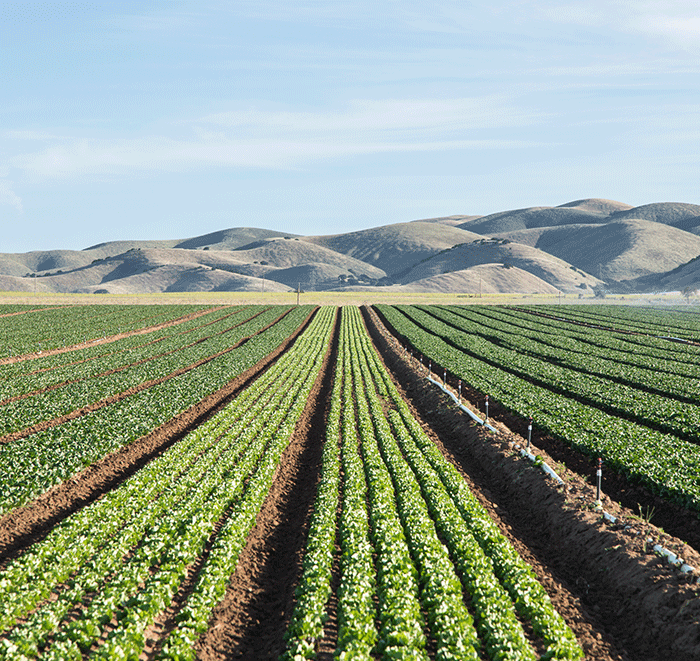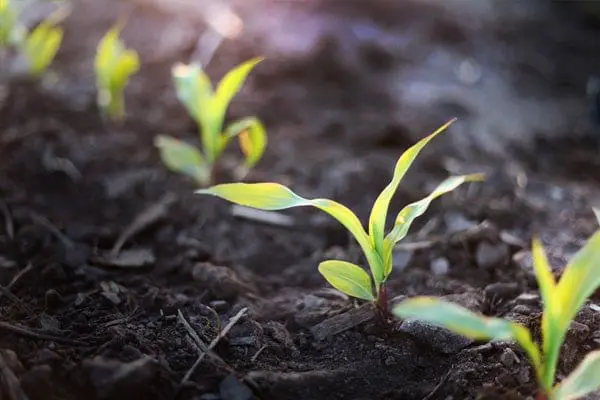Precision Pays Off: Getting the Most from Your Starter Fertilizer Investment
Three tips to maximize performance outcomes and ROI
As planters roll, it’s a good time to make sure your starter fertilizer program is primed to deliver what your crop and bottom line require.
Balanced starter fertilizers are important tools to help accelerate germination, support uniform emergence and enhance root development for increased plant vigor and improved stress tolerance. They are especially helpful when planting in cold, wet field conditions.
“The main thing we’re trying to do with starter fertilizer is get that seed off to a quick, even start,” says Jason Perdue, Wilbur-Ellis branded technologies territory manager in York, Nebraska. “One way to do that is by using a low-salt starter and adding micronutrients or other biologicals based on soil conditions and needs.”
A good, strong fertility program is always the base, Purdue says. “From there, you can build in what you need. We like having a starter as part of a broader program, especially where we can add a biological, like Nutrio Unlock® or a humic acid or fulvic acid from the Puric® line because those tools can help you be more efficient with phosphorus or nitrogen application.”
With these ideas in mind, here are three ways to gain the most return from your starter fertilizer investment.
1. Avoid seedling harm
Planting conditions matter. Keep in mind soil moisture influences the impact seed-placed fertilizer has on seeds and seedlings. Dry conditions at planting, with limited subsequent rainfall, can increase the potential for seedling damage.
The goal of a fertilizer program is to maximize root-nutrient contact, especially at the early stages of crop/root development, without causing emergence or establishment problems.
“When we think of a starter fertilizer plan, we want to have a very seed-safe, low-salt, high-orthophosphate starter, like TILL-IT®GOLD-ZONE® ULTRA and then we can build from there,” suggests Perdue. “The caution is always to ensure that what you use is safe for the seed. We don’t want to hurt germination. We want to help the plant.”
This is important because fast-growing young plants generally are more resistant to insect and disease attacks and can compete with weeds more effectively. Readily available nutrients near young plants help ensure rapid early growth and the formation of large leaves, which are necessary for photosynthesis, and subsequent crop maturity.[1]
2. Precise placement is essential
Next, consider fertilizer placement. It matters because most starter fertilizers contain phosphorus, which promotes germination and root development but does not move in the soil. Starter fertilizer placement is critical, whether it be under conventional tillage, no-till or irrigation.
To optimize yield, fertilizer must be placed in the region with the highest density of fine roots or in a location where the nutrients will move.
Understanding how root development plays out is helpful for leveraging these factors and maximizing starter fertilizer investments:
- The primary root develops first, followed by the first seminal pair. Again, consider where less soluble fertilizers, such as phosphorus, are placed in relation to the seed since it will be accessed earlier in the growing season by plant roots.[2]
- Next, more seminal pairs and crown roots (lateral roots above the seed) develop and can access fertilizer placed to the side of the seed.2
- Mature root systems generally grow much deeper than the depth of applied fertilizer, though final depth is dependent on crop and soil moisture.2
“Placement is the strongest recommendation I can make about starter fertilizer,” says Brian Jeske, Wilbur-Ellis senior field agronomist in Fairfield, Washington. “It is one of the most important factors and helps give you the best chance to return your ROI when you band it with the seed, whatever seed that may be.”
Starter fertilizer placement is so critical because it provides a readily available supply of plant nutrients in a position where they are easily accessible to the limited root system of a seedling. Even though your soil may have high fertility, a seedling’s root system may not be able to obtain the necessary nutrients due to lack of size and density within the soil.1
“Getting seed to germinate and creating great root development are the key building blocks for a crop,” Jeske says. “Once you have great root development, they can spread throughout the soil and obtain the rest of the nutrients we apply.”
3. Know your soil and crop needs
Building a good starter fertilizer program begins with knowing your soils and crops. Every soil type is different, and each crop has different nutrient requirements. Understanding and accommodating field fertility are essential, so keep soil test results and crop needs in mind as you plan your program.
“Some crops require more starter fertilizer than others,” adds Jeske. “Cereal grains might take a little bit less than a corn crop or a vegetable crop or even a tree fruit crop. Be agronomically smart – the one thing you don’t want to do is apply too much when it is not necessary, especially in times like these when commodity prices are tight.”
While it’s essential to plan your overall field fertility program with yield goals in mind, starter programs require a slightly different mindset.
“Oftentimes, if you’re trying to grow 125-bushel corn or 300-bushel corn, a solid starter program may look very similar,” says Perdue. “Following the starter program, you can change macronutrients, overall nitrogen and phosphorous, and adjust those to meet yield goals. Every plant will want to get off to the best start possible and then you can focus your attention on your end goals. The first few weeks after planting is where we see the biggest returns on starter programs.”
Contact your local Wilbur-Ellis agronomist for help with starter fertilizer decisions or learn more here.
[1] Beegle DB, Roth GW, Ligenfelter D. Penn State University. 1997. Starter fertilizer. Available at: https://extension.psu.edu/starter-fertilizer.
[2] Jones C, Jacobsen J. Montana State University. Fertilizer Placement and Timing. Available at: https://www.certifiedcropadviser.org/files/certifications/certified/education/self-study/exam-pdfs/41.pdf

